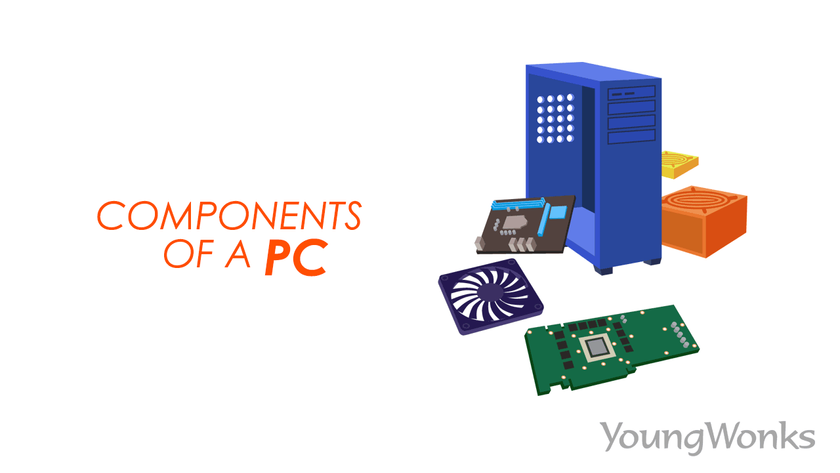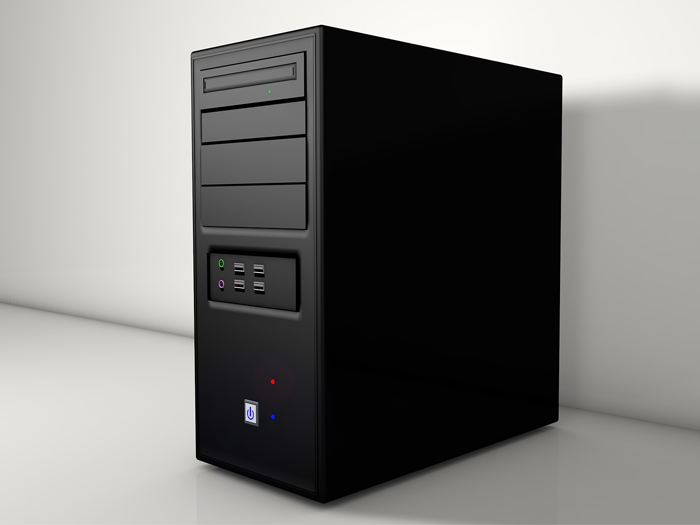Jul 02, 2019 By Team YoungWonks *
What are the parts of a computer - the basic components of a PC?
Given that computers have pervaded our lives today, it is important that we get acquainted well with the computer, its hardware, how it is assembled/ put together and what are the key computer parts.
While building a PC is more complex than this, the blog is a great starting point. For in this blog, we shall look at the basics of how to assemble a computer or the main hardware components of a PC (personal computer).
The key parts of a PC are as follows:
Computer Case
Image courtesy: https://pixabay.com
A computer case, also known as a computer chassis, tower, system unit or a cabinet, is the enclosure housing most of the components of a personal computer. This typically doesn’t include the display, keyboard, and mouse. Cases are usually made from steel or aluminium. Other materials used include plastic, glass, wood and even Lego bricks in some home-built cases. The size and shape of a computer case depends on the form factor of the motherboard, as it is the largest component in most computers. Usually, computer cases include sheet metal enclosures for a power supply unit and drive bays and a rear panel that has room for peripheral connectors protruding from the motherboard and expansion slots. Most cases also have a power button or switch, a reset button, and LEDs to indicate power, hard drive activity, and network activity in some models. Some cases have built-in I/O ports (such as USB and headphone ports) on the front of the case. Such a case usually has the wires required to connect these ports, switches and indicators to the motherboard.
It is important to note that the power supply unit (PSU) mounting point can vary from case to case. That said, the most common locations are the top of the case, which allows the PSU’s built-in fan to act as an auxiliary exhaust fan and the bottom of the case, with an often filtered vent that in turn allows the PSU to draw cool air from the outside.
Motherboard
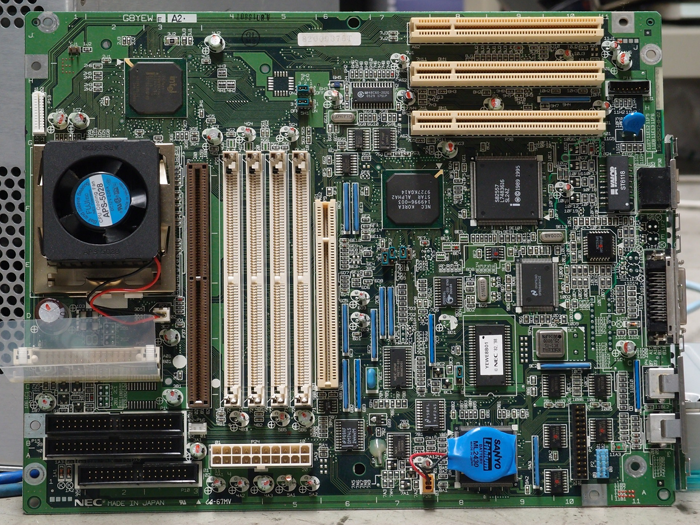
Image courtesy: https://www.pexels.com/
A motherboard, also called the mainboard, main circuit board, system board, baseboard, planar board or logic board, is the main printed circuit board (PCB) found in general purpose computers and other expandable systems. A motherboard makes possible the electrical connections through the other components of the system can communicate. In other words, it holds and allows communication among several key electronic components of a system, such as the central processing unit (CPU) and memory, and provides connectors for other peripherals. It usually contains major sub-systems such as the central processor, the chipset’s input/output and memory controllers, interface connectors, and other components integrated for general purpose use and applications.
The reason this board - mainly the PCB - is called the motherboard is because it is the "mother" of all the components attached to it. These components include but are not limited to: peripherals, interface cards, sound cards, video cards, network cards, hard drives (or other forms of persistent storage), TV tuner cards and cards providing extra USB or FireWire slots. The motherboard is usually attached to the computer case along its largest face: either the bottom or the side of the case depending on the form factor and orientation.
CPU

Image courtesy: https://www.pexels.com/
A central processing unit (CPU), also known as a central processor or main processor, refers to the electronic circuitry within a computer that carries out the instructions of a computer program by performing the basic arithmetic, logic, controlling, and input/output (I/O) operations as per the instructions. Traditionally, the term CPU alludes to a processor, specifically the processing unit and control unit (CU). The main parts of the CPU are the arithmetic logic unit (ALU) that carries out arithmetic and logic operations; the processor registers that pass on the operands (objects of the mathematical operation) to the ALU and store the results of the operations; and a control unit that makes possible the fetching (from memory) and execution of instructions. Most modern CPUs are microprocessors, as in they are contained on a single integrated circuit (IC) chip. However, there are some computers that have a multi-core processor, where a single chip contains two or more CPUs called cores.
While purchasing a computer, it is important to look at the CPU and its capabilities. After all, the CPU is the brain of the PC and it plays a crucial role in the computer’s performance. So for instance, a faster CPU will allow you to you play games, edit photos, surf web pages and work on spreadsheets faster, but a higher-wattage processor could also give you worse battery life. Intel and AMD are the biggest players in the CPU industry. Users generally keep in mind the main tasks they intend to perform with the computer and buy one accordingly. For instance, while the Intel Atom series is very easy on the pocket, it doesn’t score well on the performance front. Similarly, Intel Celeron and Pentium are ideal for those on a budget. For those looking for consistent productivity, the Intel Core i5 U Series or the AMD Ryzen Mobile 5 is recommended. If you are looking for everyday productivity and then some more, Intel Core i7 U Series, Intel Core i5, i7 G Series and AMD Ryzen Mobile 7 make for good options. For workstation and gaming purposes - which typically take up a lot of processing power, it is better to go for Intel Core i5 or Intel Core i7 H Series.
Earlier on, AMD processors appeared in only low end computer systems with mediocre performance and low battery life. However, two years ago, the company released its new and impressive Ryzen Mobile platform, which has done as well as Intel CPUs be it in terms of graphics performance or the battery life. Among Intel CPUs, Core i3 is the slowest, i5 is average and i7 is fastest. The i5 model is fairly adequate for a regular, everyday user who doesn’t do intensive graphics work, engineering / science or gaming. Both Core i5 and Core i7 support turbo boost, which allows the clock speed to go higher depending on the task, and Hyper-Threading, which gives users two unique threads (virtual cores) for each core. However, Core i3 does not offer these features.
Storage
When it comes to computer storage, there are two key components one can look at: a hard disk and a solid state drive.
Hard Disk Drive

Image courtesy: https://www.pexels.com/
A hard disk drive (HDD), commonly known as a hard drive (HD), is a non-volatile memory hardware device that permanently stores and retrieves data on a computer (aka, it retains stored data even when the PC has been switched off). A secondary storage device, it comprises one or more platters to which data is written with a magnetic head, all inside an air-sealed casing. All computers have a hard drive installed in them, as the computers need it to store items such as files for the operating system, software programs, and personal files of users. Thus, a hard disk is a key component of a computer. Internal hard disks are typically housed in a drive bay and they connect to the motherboard using cable; they are powered by a connection to the PSU (power supply unit). The major features of a hard disk are its capacity and performance. Capacity is mentioned in unit prefixes corresponding to powers of 1000; so a 1-terabyte (TB) drive has a capacity of 1,000 gigabytes (GB; where 1 gigabyte = 1 billion bytes).
Hard disks have been the popular secondary storage device for general-purpose computers since the early 1960s and market leaders in this field include Seagate, Toshiba, and Western Digital. And while they continue to dominate the volume of storage produced for servers, they are not quite in demand the way they were earlier. This is mainly because of the advent and rise of the solid-state drives (SSDs), which come equipped with better features.
Solid State Drive (SSD)
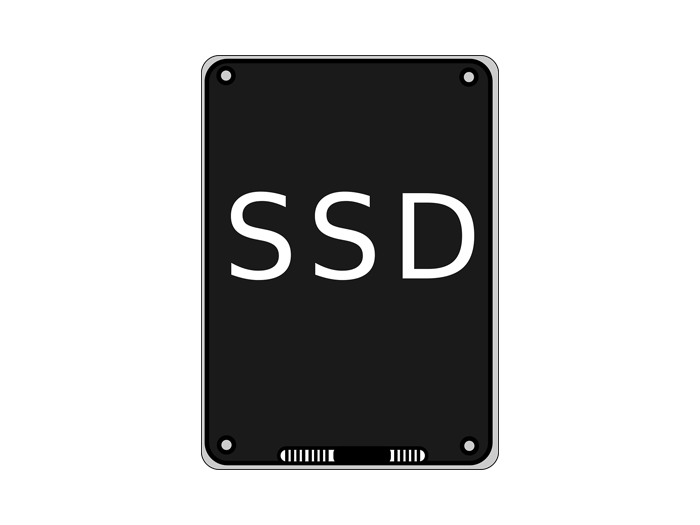
Image courtesy: https://pixabay.com
An SSD then is a solid-state storage device that uses integrated circuit assemblies as memory to store data continuously. It basically stores data in semiconductor cells and cells are said to be able to contain between 1 and 4 bits of data. Also called solid-state devices or solid-state disks, SSDs typically boast higher data-transfer rates, higher areal storage density, better reliability, and much lower latency and access times when compared to a hard disk. In addition, when compared with electromechanical drives, SSDs are more resistant to physical shock and run silently.
RAM

Image courtesy: http://www.freeimages.com
RAM, short for Random Access Memory is the hardware in a computing device where the operating system (OS), application programs and data in current use are stored so they can be quickly accessed by the device's processor. RAM is the main memory in a computer, and it is much faster to read from and write to than other kinds of storage, such as a hard disk drive (HDD), solid-state drive (SSD) or optical drive. On the flipside, RAM is volatile. That means data is available in RAM as long as the computer is on, but it is lost when the computer is turned off. It is thus a kind of short-term memory and when the computer is restarted, the OS and other files are usually reloaded into RAM from an HDD or SSD.
RAM is conceptually similar to a set of boxes where each box stores a 0 or a 1. Each box has a unique address that is determined by counting across the columns and down the rows. Each box is known as a cell and together, they form an array. Each row and column in a RAM array has its own address line. RAM is physically small and stored in microchips. It's also small in terms of the amount of data it can hold. A typical laptop computer may come with 8 gigabytes of RAM, while a hard disk can hold 10 terabytes.
Case indicator lights
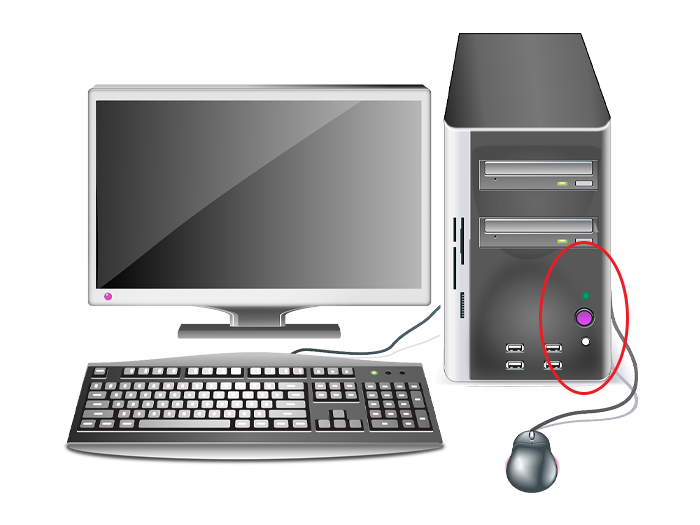
Image courtesy: https://pixabay.com
As the name suggests, the case indicator lights are the lights (LEDs) that prompt the user to make a note of the status of a hardware device. Some examples of these would be those that show if your computer is on, if your caps lock is on or if your hard drive is working. Indeed, an important case indicator light is the hard drive activity light, sometimes called a hard drive light (HDD LED). It is a small LED light that is on whenever the hard drive or other built-in storage is being read from or written to. It is very useful to know when one’s computer's hard drive is being accessed; this way one can avoid pulling the battery or unplugging the computer while the operating system is still accessing files on the drive, thus keeping from making a mistake that can potentially lead to corruption of several important files. On a desktop, the hard drive activity light is usually located in the front of the computer case. On a laptop, the HDD LED is typically situated near the power button.
In addition to these, there are lights that point out if the num lock, caps lock, or scroll lock are on or off. So when the caps lock is on, one may see a light on or next to the Caps Lock key. Similarly, when the num lock is on, you’ll see a light on or above the Num Lock key.
Graphics card

Image courtesy: https://www.pexels.com/
Gaming PCs or gaming computers in particular need great video cards. What then is a video card? A video card, also called a display card, graphics card, display adapter, or graphics adapter, is an expansion card that connects with the motherboard of the computer and generates a feed of output images to a display device (such as a computer monitor). A video card typically includes a processing unit, memory, a cooling mechanism and connections to a display device. To distinguish themselves from integrated graphics (where video hardware has been integrated into the motherboard, CPU, or a system-on-chip), they are usually referred to as discrete or dedicated graphics cards. However, at the core of both is the graphics processing unit (GPU). Most video cards are not limited to simple display output. Their integrated graphics processor can carry out additional processing, thus easing the processing load of the CPU. Take for instance, the graphic cards from Nvidia and AMD (ATi); they render the graphics pipeline OpenGL and DirectX on the hardware level. Typically, such a graphics card is made in the form of a printed circuit board (expansion board) and can be inserted into an expansion slot, universal or specialized (AGP, PCI Express). Some have been made using dedicated enclosures, which are connected to the computer via a docking station or a cable. A computer doesn’t necessarily need a graphics card as most motherboards come with onboard/ integrated graphics. That said, the problem with integrated graphics is that here the graphics processor shares system resources with the CPU. Whereas a dedicated graphics card has its own random access memory (RAM), its own cooling system, and dedicated power regulators, with all components designed specifically for processing video images; all of this resulting in a typically better performance.
Thermal management components of a PC
Computers tend to heat up when used for a long time or for carrying out complex tasks - this is why a thermal management system is a crucial component of a PC.
Heatsink
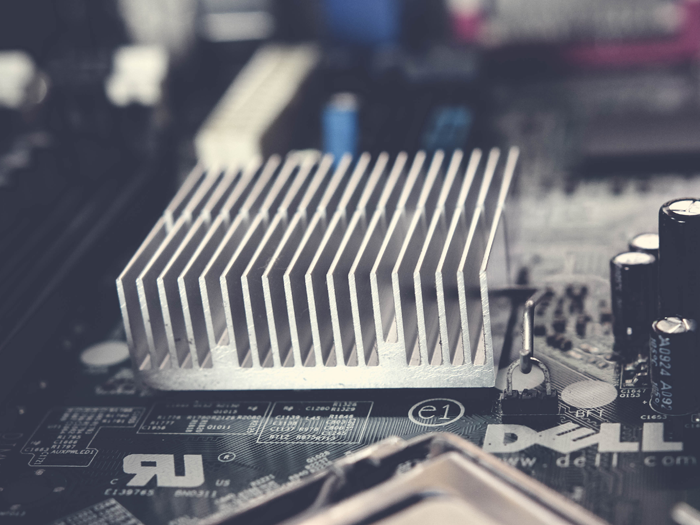
Image courtesy: https://www.pexels.com/
Cooling fan

Image courtesy: https://www.pexels.com/
The key component then is the heatsink; they are used to cool CPUs, GPUs, and some chipsets and RAM modules. A heat sink then includes either a fan or some other means to keep a hot component, such as a processor, cooled down. There are two types of heat sink: passive and active. The former are usually made out of copper/ aluminium and have no mechanical components. They essentially transfer the heat generated by an electronic or a mechanical device to a fluid medium, often air or a liquid coolant, where it is dissipated away from the device, thus regulating the device's temperature at optimal levels. A heat sink aims to maximize its surface area in contact with the cooling medium surrounding it, such as the air. This means that the performance of such a heat sink depends on the air velocity, choice of material, protrusion design and surface treatment. Active heat sinks, on the other hand, make use of the computer's power supply and may include a fan. Sometimes these types of heat sinks are referred to as an HSF, which is an abbreviation for heat sink and fan. There are also liquid cooling systems, which have become quite popular nowadays.
Connecting Hardware Proficiency and Coding Skills
As you delve into understanding computer components, knowing how to code can further demystify the digital world, enabling you to not only comprehend how software interacts with hardware, but also create your own programs. Enrolling in coding classes for kids can provide a solid foundation in computer science, enhancing your grasp of how computers function at a fundamental level. This knowledge is not just empowering; it's a stepping stone towards becoming adept at navigating and innovating in a tech-driven world.
*Contributors: Written by Vidya Prabhu; Lead image by: Leonel Cruz
